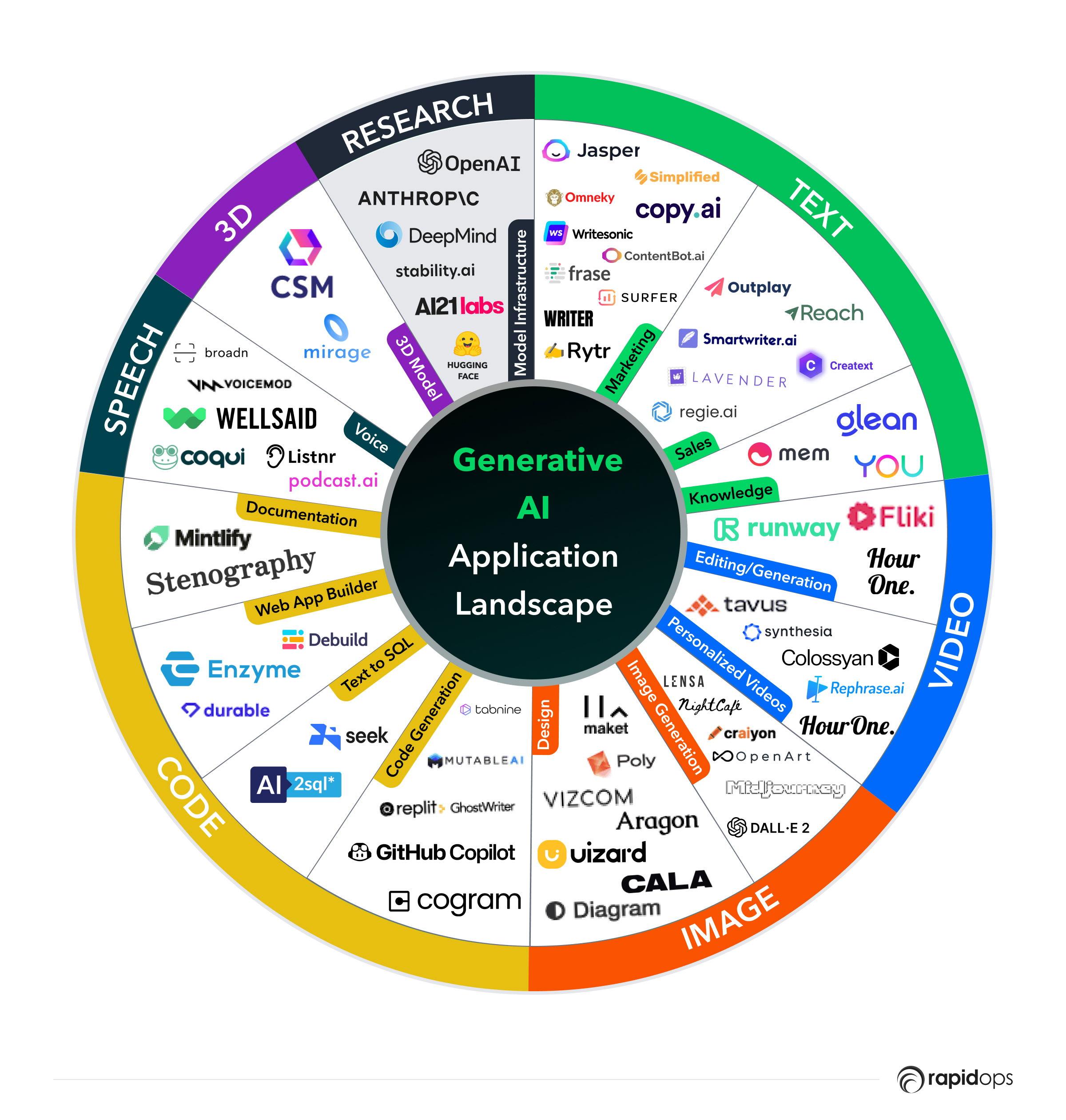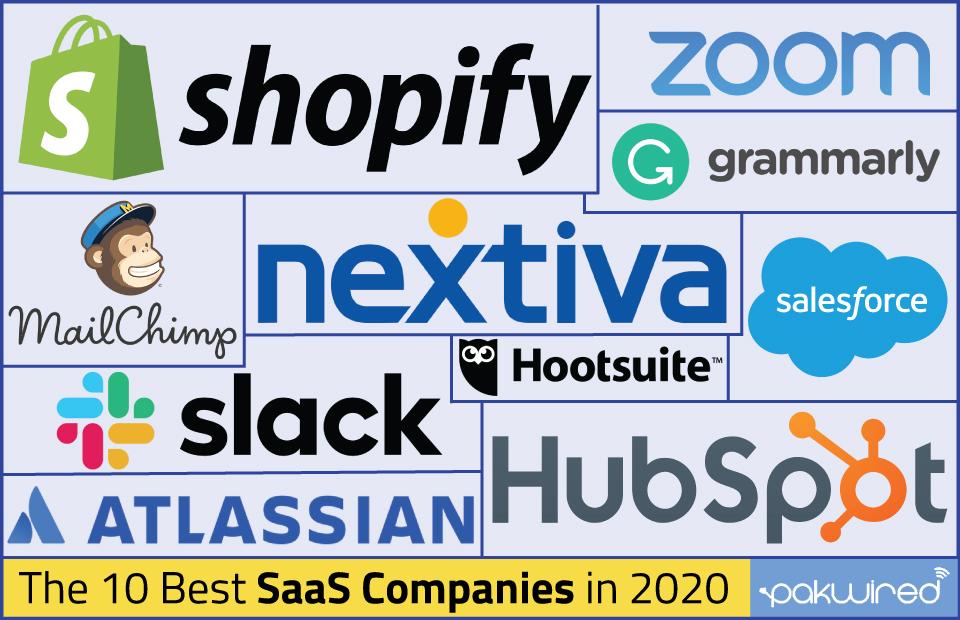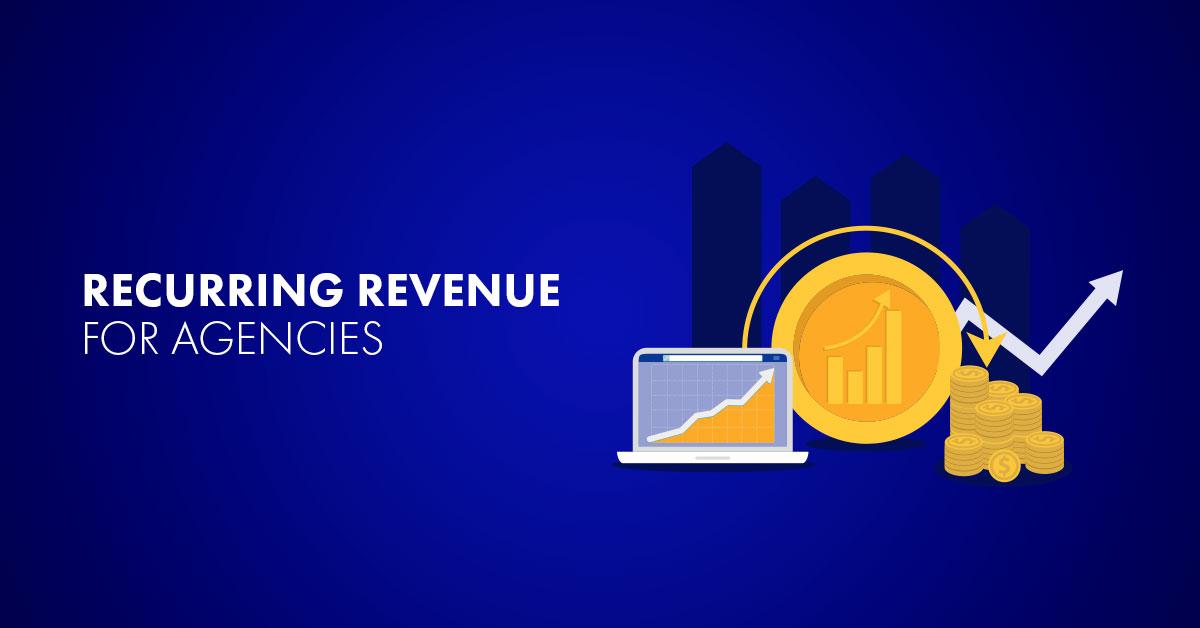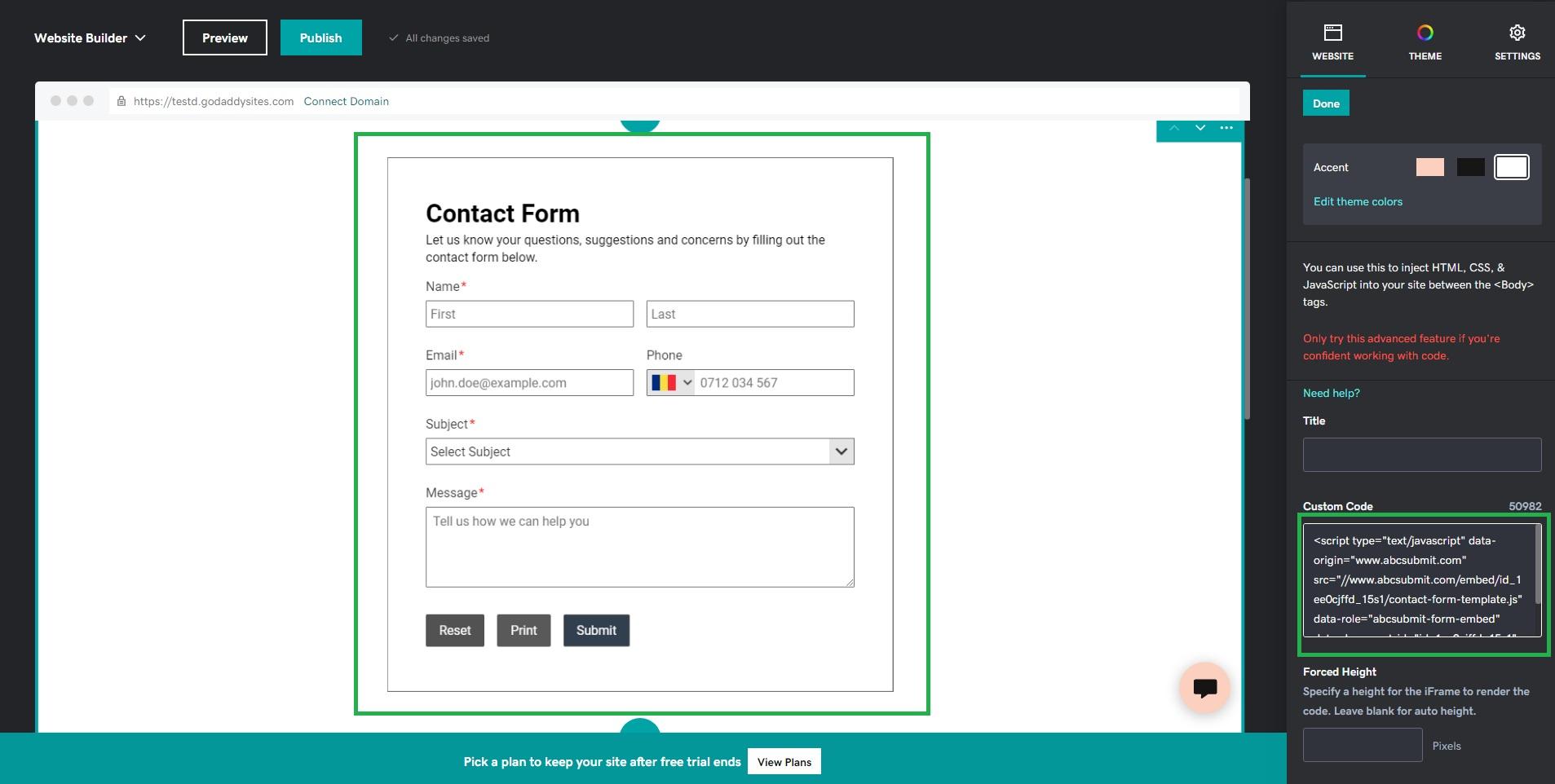
How to Choose the Best Ecommerce Platform for You
Jumping into the world of ecommerce is an exciting adventure! Whether you’re a seasoned entrepreneur looking to expand your online presence or a first-time business owner eager to launch your passion project, choosing the right ecommerce platform is a crucial first step. With so many options out there, it can feel overwhelming—like trying to find a needle in a haystack. But don’t worry! We’re here to simplify the process and help you find the perfect fit for your unique needs.
In this article, we’ll explore the key factors to consider when selecting an ecommerce platform, from user-friendliness and customization options to payment processing and scalability. By the end, you’ll have a clear understanding of what to look for, so you can confidently embark on your ecommerce journey. Ready to dive in? Let’s find the platform that will help bring your vision to life!
Understanding Your Business Needs
Choosing the right ecommerce platform starts with a deep understanding of what your business needs. It’s not just about picking the most popular option or the one with the flashiest features; it’s about aligning the platform’s capabilities with your specific goals and requirements.
To begin, consider your business model. Are you selling digital products, physical goods, or both? Each model typically requires different functionalities. For instance:
- Digital products: Look for platforms that support file hosting and instant delivery.
- Physical products: Ensure the platform has robust inventory management and shipping integrations.
Your target audience also plays a critical role in your selection process. Understand their preferences and behaviors. For example, if your customers are predominantly mobile users, you’ll want a platform that offers a responsive design and a seamless checkout experience on smartphones and tablets.
Next, evaluate your budget. Different platforms come with varying price points, so it’s essential to factor in both initial setup costs and ongoing expenses like transaction fees, monthly subscriptions, and additional app integrations. Create a simple table to visualize your investment:
| Platform | Initial Cost | Monthly Fees | Transaction Fees |
|---|---|---|---|
| Platform A | $200 | $50 | 2.9% + 30¢ |
| Platform B | $100 | $30 | 2.5% + 25¢ |
| Platform C | $0 | $20 | 3.0% + 20¢ |
Additionally, think about the scalability of the platform. Your business may be small today, but if you have plans to grow, choose a platform that can grow with you. This means looking for options that allow for easy upgrades and integrations as your needs evolve.
Lastly, consider the level of support you’ll need. If you’re not tech-savvy, a platform with robust customer support, tutorials, and community forums can be invaluable. Ensure that the platform you choose can offer the help you need, especially during the early stages of setting up your online store.
By thoroughly assessing these areas, you’ll be better positioned to choose an ecommerce platform that not only meets your current needs but also supports your vision for the future. Remember, it’s all about making informed choices that align with your unique business aspirations.
Evaluating Key Features of Ecommerce Platforms
When it comes to selecting an ecommerce platform, there are several key features that can make or break your online business. Understanding these features will help you choose a platform that aligns with your specific needs, enabling you to create an effective and engaging online store.
First and foremost, consider the user experience. A platform should be intuitive for both you and your customers. Look for features such as:
- Drag-and-drop functionality: Simple tools to design your store without needing coding skills.
- Mobile responsiveness: Ensuring your site looks great on all devices.
- Fast loading times: A crucial factor for retaining customers and optimizing SEO.
Next up is payment options. A good ecommerce platform should support various payment gateways to cater to a broader audience. Some essential payment features include:
- Multiple payment gateways: Support for credit cards, PayPal, and other alternative payment methods.
- Currency conversion: Useful for international sales.
- Security measures: SSL certificates and PCI compliance to protect customer data.
Another vital aspect is inventory management. As your business grows, you’ll need reliable tools to manage stock levels. Important inventory features to look for are:
- Real-time inventory tracking: Keep tabs on your stock to avoid overselling.
- Bulk import/export options: Simplify adding or updating products.
- Automated alerts: Notifications for low stock to help you reorder on time.
Don’t overlook the importance of marketing tools. A platform that integrates marketing features can boost your sales and customer engagement. Essential marketing functionalities include:
- Email marketing integration: Connect with popular services to manage campaigns.
- SEO-friendly features: Tools to optimize product pages and blog posts.
- Social media integration: Directly sell through platforms like Facebook and Instagram.
Lastly, consider the customer support provided by the platform. Reliable support can save you time and stress when troubleshooting issues. Look for:
- 24/7 support: Access help whenever you need it.
- Comprehensive knowledge base: Articles and videos for self-help.
- Community forums: Connect with other users to share insights and solutions.
| Feature | Importance |
|---|---|
| User Experience | High |
| Payment Options | Critical |
| Inventory Management | High |
| Marketing Tools | Moderate |
| Customer Support | Essential |
By evaluating these key features thoughtfully, you’ll be equipped to select an ecommerce platform that not only meets your current requirements but also scales with your business in the future. Make sure to prioritize what matters most to your business model, and you’ll set yourself up for success in the competitive online marketplace.

Comparing Pricing Plans and Fees
When it comes to selecting an ecommerce platform, pricing plans and associated fees are often the first considerations for many business owners. The cost can vary significantly from one platform to another, influenced by a number of factors including transaction fees, monthly subscriptions, and additional features. Understanding these costs can help you avoid unpleasant financial surprises down the line.
Here are some common pricing structures to look out for:
- Monthly Subscription Fees: Most platforms have a tiered subscription model. Prices can range from as low as $10/month for basic plans to several hundred dollars for advanced features and higher sales volumes.
- Transaction Fees: Some platforms charge a percentage of each sale. This can add up quickly, especially for businesses with thin profit margins.
- Payment Processing Fees: Beyond just transaction fees, you may also encounter charges for payment processing services, which can be a percentage of the transaction plus a flat fee.
- Hidden Costs: Be wary of additional charges for extra features like hosting, security, or integrations with third-party apps.
To help you compare the costs effectively, here’s a simple breakdown of some popular ecommerce platforms:
| Platform | Monthly Fee | Transaction Fee | Payment Processing Fee |
|---|---|---|---|
| Shopify | $29 | 2.9% + 30¢ | 2.9% + 30¢ |
| WooCommerce | Free (hosting fees apply) | None | Varies by payment gateway |
| BigCommerce | $29.95 | 2.5% (on standard plan) | 2.9% + 30¢ |
| Squarespace | $18 | 3% (on personal plan) | 3% + 30¢ |
While comparing these costs, consider your projected sales volume. A platform with a higher monthly fee but lower transaction costs may be more economical in the long run if you anticipate significant sales. Don’t just look for the lowest initial costs; think about how the fees will scale with your business growth.
Another crucial factor is the flexibility of the pricing plan. Some platforms offer a pay-as-you-go model, which can be beneficial for startups or seasonal businesses. This can minimize financial risk as you only pay for what you use. Others may lock you into annual contracts, which could become a burden if your business model changes.
always evaluate the value you’re getting for your money. Look for platforms that provide robust customer support, comprehensive features, and scalability options. Sometimes a slightly higher fee can be justified by the superior service and tools that can help you grow your business more effectively.
The Importance of Scalability for Future Growth
When selecting an ecommerce platform, one of the most critical factors to consider is its scalability. In today’s fast-paced digital environment, businesses must be prepared to grow and adapt to changing market conditions. A platform that supports scalability not only allows you to accommodate increased traffic and sales but also provides the flexibility to evolve alongside your business needs.
Why Scalability Matters:
- Handling Traffic Surges: A scalable platform can efficiently manage spikes in traffic, such as during sales events or holiday seasons, ensuring that your website remains operational and user-friendly.
- Growing Product Lines: As your business expands, you may want to add new products or categories. A flexible platform allows you to do this seamlessly without overhauling your entire system.
- Integrating New Features: As technology advances, your business might need new functionalities, such as advanced analytics or customer relationship management tools. A scalable platform will support these integrations easily.
Another vital aspect of scalability is the ability to support global expansion. If you have plans to enter new markets, your ecommerce platform should be able to handle multiple currencies, languages, and shipping options without a hitch.
To illustrate the differences in scalability among popular ecommerce platforms, consider the following comparison:
| Platform | Scalability Features | Ideal For |
|---|---|---|
| Shopify | Automatic scaling during traffic spikes, app integrations | Small to medium businesses |
| WooCommerce | Customizable, open-source plugins for features | Tech-savvy users and larger businesses |
| BigCommerce | Built-in features for large catalogs, multi-channel selling | Growing brands with high sales volume |
| Magento | Highly customizable, robust for enterprise-level needs | Large enterprises with specific needs |
Consider the long-term vision for your ecommerce business. A platform that can grow with you will save you time, effort, and resources in the future. Migrating to a new platform can be a daunting task that involves data transfer, redesigning your store, and retraining your staff. Choosing a scalable solution from the start minimizes these future challenges.
Ultimately, the right ecommerce platform should not only meet your current needs but also empower you to reach new heights. By prioritizing scalability, you can ensure that your online store remains robust and competitive, no matter what the future holds. Choose wisely, and watch your business thrive.
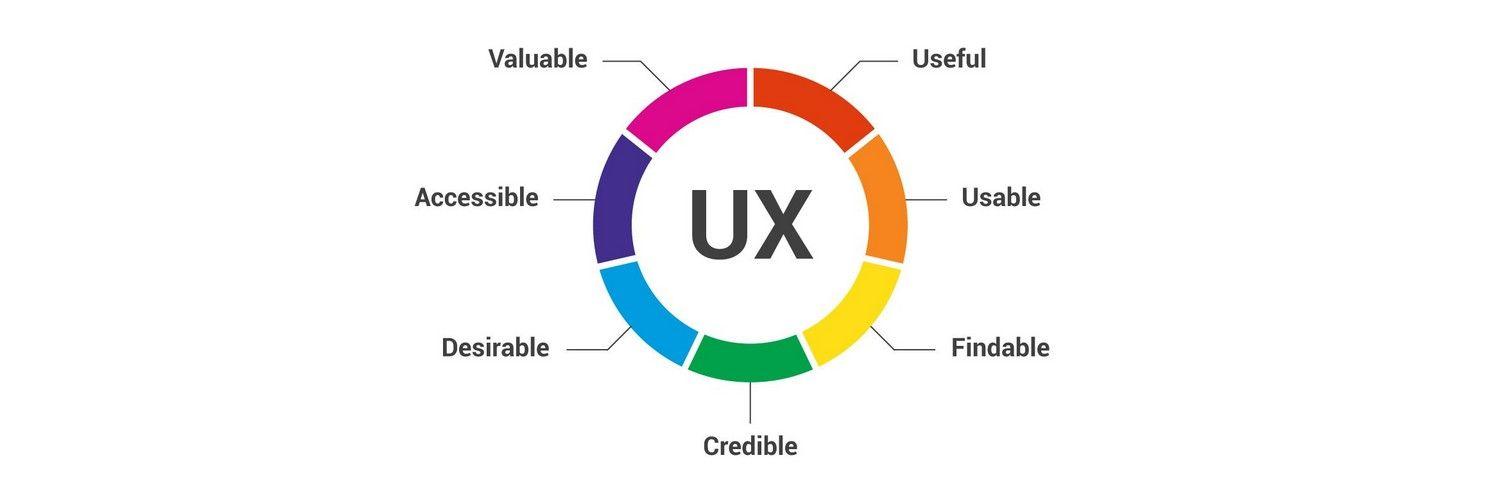
User Experience: Finding a Platform That’s Easy to Navigate
When selecting an eCommerce platform, user experience plays a pivotal role in determining the success of your online store. A platform that’s intuitive and easy to navigate not only enhances your ability to manage your products and services but also provides a seamless shopping experience for your customers. Here are some key factors to consider:
- Intuitive Layout: Look for platforms that offer a clean and organized interface. A well-structured dashboard allows you to find essential tools and features without extensive searching.
- Customization Options: An effective platform should enable you to tailor your eCommerce site without requiring advanced technical skills. Easy drag-and-drop functionality or customizable templates can elevate your store’s look while making navigation a breeze.
- Mobile Responsiveness: With more shoppers using mobile devices, ensure your chosen platform provides a responsive design. A mobile-friendly interface guarantees that customers can easily browse and make purchases on-the-go.
- Search Functionality: A robust search feature can significantly enhance user experience. The ability to quickly find products through filters or keyword searches reduces frustration and increases conversion rates.
To help you better understand the importance of user experience in various platforms, consider the following table comparing popular eCommerce solutions:
| Platform | User Experience Features | Ease of Navigation |
|---|---|---|
| Shopify | Custom themes, mobile responsive | High |
| WooCommerce | Extensive plugins, customizable | Moderate |
| BigCommerce | Built-in SEO tools, user-friendly | High |
| Magento | Advanced customization options | Complex |
Additionally, pay attention to customer support and community forums. A strong support system reflects a company’s commitment to user experience. Whether through live chat, email, or extensive documentation, having access to help when you need it can make a world of difference.
Lastly, don’t underestimate the power of user feedback. Explore reviews and testimonials from other users to gauge their experiences. A platform that consistently receives positive remarks regarding its usability is likely one you can trust.
Finding an eCommerce platform that prioritizes user experience means you can focus more on growing your business rather than grappling with a complicated interface. By choosing wisely, you create an inviting environment for your customers and simplify your operational tasks, leading to a more successful online enterprise.

Mobile Compatibility: Why It Matters More Than Ever
In today’s digital landscape, mobile compatibility is not just a nice-to-have; it’s a necessity. With statistics showing that over 50% of global web traffic now comes from mobile devices, ensuring your ecommerce platform is fully optimized for mobile users is crucial. Failing to do so can mean losing out on a significant portion of potential customers.
Consider the following key reasons why mobile compatibility should be at the forefront of your ecommerce platform selection:
- User Experience: A mobile-friendly site leads to a smoother shopping experience. Large images, easy navigation, and quick load times are essential for keeping users engaged.
- SEO Benefits: Search engines like Google prioritize mobile-friendly websites in their rankings. A robust mobile experience can enhance your visibility and attract more traffic.
- Increased Conversion Rates: Studies have shown that ecommerce sites optimized for mobile can see conversion rates increase by up to 160%. A secure, easy-to-use checkout process on mobile devices can seal the deal.
- Accessibility: Customers want to shop anytime, anywhere. A responsive design ensures your store is accessible on various devices, catering to users who prefer shopping on their smartphones.
When assessing ecommerce platforms, pay attention to the following features related to mobile compatibility:
| Feature | Importance |
|---|---|
| Responsive Design | Ensures your site adjusts to different screen sizes seamlessly. |
| Mobile Payment Options | Supports mobile wallets like Apple Pay and Google Wallet for quick transactions. |
| Fast Load Times | Minimizes bounce rates and retains user interest. |
| Easy Navigation | Allows users to find products effortlessly, enhancing the shopping experience. |
Moreover, testing your site’s mobile-friendliness is vital. Utilize tools such as Google’s Mobile-Friendly Test to analyze your site and make necessary adjustments. Regularly update your platform to address any issues and stay compliant with the latest mobile standards.
Lastly, remember that your competition is likely already optimizing for mobile. By prioritizing mobile compatibility, you position your business to not only meet but exceed customer expectations, setting yourself apart in a crowded market. Make an informed choice about your ecommerce platform, and watch your business flourish in the mobile-first world.
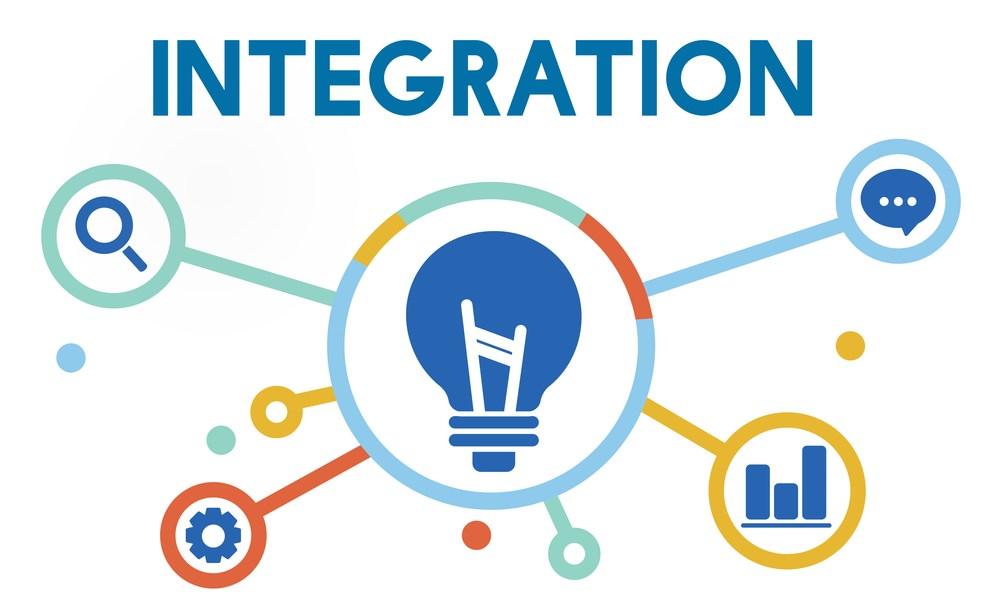
Integrations: Connecting with Tools You Already Use
In today’s fast-paced business environment, it’s crucial to have an ecommerce platform that seamlessly integrates with the tools you already rely on. The right integrations can save you time, enhance productivity, and improve your overall customer experience. When selecting an ecommerce platform, consider how well it connects with your existing software and services.
Here are some essential types of integrations to look for:
- Payment Gateways: Ensure your platform supports popular payment gateways like PayPal, Stripe, and Square. This will allow your customers to checkout using their preferred payment method.
- Shipping Solutions: Integrating with shipping services (like ShipStation or UPS) makes it easier to manage logistics, print labels, and provide real-time tracking for your customers.
- Inventory Management: An integration with inventory management tools can help you keep track of stock levels, manage suppliers, and prevent overselling.
- Email Marketing Tools: Connecting with platforms like Mailchimp or Constant Contact allows you to automate email campaigns, nurturing leads and building customer loyalty.
- CRM Systems: Integrating with Customer Relationship Management (CRM) software like Salesforce or HubSpot helps you maintain customer relationships and improve service.
Furthermore, a platform that offers an API (Application Programming Interface) can be a game changer. This flexibility allows you to create custom integrations tailored to your business needs, giving you more control over your operations. You can connect various apps and automate workflows, which can significantly enhance efficiency.
Don’t forget to check if your chosen platform supports integrations with social media channels. This can be invaluable for driving traffic and engaging with your audience. Look for features that allow you to sell directly on social platforms, such as Facebook and Instagram, or tools that facilitate social media marketing automation.
When considering integrations, it’s also wise to evaluate the quality of developer support and documentation. A platform with a strong developer community will make it easier to troubleshoot any issues you may encounter. Plus, having access to tutorials and guides can help you set up integrations more effectively.
To simplify your decision-making process, here’s a quick comparison table of popular ecommerce platforms and their integration capabilities:
| Platform | Payment Gateways | Shipping Integration | CRM Support |
|---|---|---|---|
| Shopify | PayPal, Stripe, Authorize.net | ShipStation, USPS, FedEx | HubSpot, Salesforce |
| WooCommerce | PayPal, Stripe, Square | Table Rate Shipping, UPS | Zoho, HubSpot |
| BigCommerce | PayPal, Stripe, Apple Pay | ShipBob, Easyship | Salesforce, HubSpot |
Ultimately, the goal is to choose an ecommerce platform that not only meets your current needs but also has the capacity to grow as your business evolves. By prioritizing integrations that align with your existing tools, you’ll create a cohesive ecosystem that supports your operations and drives success.

Assessing Customer Support and Resources
When diving into the world of ecommerce platforms, one of the most crucial aspects to consider is the level of customer support and resources available to you. A robust support system can often be the differentiating factor between a smooth operational experience and a frustrating one. You want a platform that not only meets your technical needs but also provides timely assistance whenever issues arise.
Start by evaluating the support channels offered by the ecommerce platform. Here are some common options to look for:
- Live Chat: Immediate assistance can save you time and reduce stress when you encounter challenges.
- Email Support: A more formal approach, useful for non-urgent queries.
- Phone Support: Speaking directly with a representative can often lead to faster resolutions.
- Knowledge Base: A well-organized resource center with articles, FAQs, and tutorials can empower you to troubleshoot independently.
Moreover, check if the platform offers community forums. Being part of a community where other users share their experiences and solutions can be invaluable. You can gather tips, tricks, and even shortcuts that might not be covered in official documentation. A vibrant community often indicates a platform that is widely used and continually improved based on user feedback.
Additionally, consider the availability of learning resources. Platforms that invest in educational content—like webinars, video tutorials, and detailed user guides—demonstrate their commitment to helping users succeed. Look for:
- Onboarding Programs: These can help you hit the ground running.
- Regular Updates: A platform that keeps its users informed about new features or changes is a plus.
- Case Studies: Real-world examples can provide insights into effective strategies and best practices.
To further aid your decision, it can be helpful to compare the support features of popular ecommerce platforms. Here’s a simple overview:
| Platform | Live Chat | Email Support | Community Forum | Knowledge Base |
|---|---|---|---|---|
| Platform A | Yes | 24/7 | Active | Extensive |
| Platform B | No | Business Hours | Moderate | Basic |
| Platform C | Yes | Response in 2 hours | Active | Comprehensive |
don’t overlook the value of customer reviews. Look for feedback specifically addressing the support experience. Are users generally satisfied? Are there common complaints? These insights can provide a clearer picture of what to expect.
the right ecommerce platform should offer not only a suite of features to help you sell but also a solid foundation of support and resources to ensure your success. The goal is to choose a solution that feels like a partnership rather than just a service, allowing you to focus on growing your business with confidence.

Security Features You Can’t Overlook
When selecting an eCommerce platform, the security features it offers should be at the forefront of your decision-making process. With the rise of online shopping, cyber threats have also escalated, making a robust security framework essential for protecting sensitive customer information and your business’s reputation.
One of the most critical security elements to look for is SSL (Secure Socket Layer) encryption. This technology ensures that all data exchanged between your customer’s browser and your server is encrypted, making it nearly impossible for hackers to intercept. Platforms that provide built-in SSL certificates not only enhance security but also boost customer trust, as it visibly shows they care about protecting sensitive information.
Moreover, consider platforms that offer PCI Compliance. Payment Card Industry Data Security Standards (PCI DSS) are a set of requirements designed to ensure that all companies that accept, process, store, or transmit credit card information maintain a secure environment. Ensuring that your platform complies with these standards can save you from hefty fines and potential legal troubles.
Another feature to prioritize is two-factor authentication (2FA). This adds an extra layer of security by requiring users to verify their identity through another method, such as a text message or app notification, in addition to their password. This is especially important for preventing unauthorized access to your store and sensitive data.
Additionally, look for platforms that provide regular security updates. Cyber threats evolve constantly, so it is crucial that your eCommerce software is regularly updated to combat new vulnerabilities. A platform that prioritizes security updates shows a commitment to safeguarding your business and your customers.
Consider also the importance of backups and recovery options. In the unfortunate event of a data breach or a technical issue, having regular backups can be a lifesaver. Choose a platform that automates this process, ensuring you can quickly restore your site and minimize downtime.
evaluate the support for security plugins or integrations. The ability to enhance your platform’s security with additional tools can be a game-changer. Platforms that allow seamless integration with reputable security services can provide you with comprehensive protection tailored to your specific needs.
| Security Feature | Description |
|---|---|
| SSL Encryption | Encrypts data between browser and server. |
| PCI Compliance | Ensures secure handling of credit card info. |
| Two-Factor Authentication | Extra verification step for user logins. |
| Regular Security Updates | Frequent updates to combat new threats. |
| Backup and Recovery | Automated backups to restore your site quickly. |
| Security Plugins | Integrations for enhanced protection. |

Exploring Payment Gateways and Options
When it comes to running an online store, selecting the right payment gateway is crucial. Payment gateways are the backbone of any eCommerce platform, ensuring that transactions are secure and efficient. With so many options available, it’s essential to understand what each offers and how they can impact your business.
Here are some key factors to consider when exploring payment gateways:
- Security: Look for gateways that use data encryption and comply with PCI DSS standards. This ensures that your customers’ sensitive information is protected.
- Fees: Different gateways charge varying transaction fees, monthly fees, or setup fees. Be sure to calculate these costs and how they align with your budget.
- Supported Payment Methods: Choose a gateway that offers multiple payment options, such as credit/debit cards, digital wallets, and bank transfers, to cater to a broader customer base.
- Integration: Your chosen gateway should seamlessly integrate with your eCommerce platform. Check for compatibility with popular platforms like WooCommerce, Shopify, or Magento.
- Customer Support: Reliable customer support is vital. Ensure that the gateway offers 24/7 assistance in case of any issues or disputes.
To give you a clearer perspective, here’s a simple comparison of some popular payment gateways:
| Payment Gateway | Transaction Fees | Supported Currencies | Integration Ease |
|---|---|---|---|
| PayPal | 2.9% + $0.30 | USD, EUR, GBP… | Easy |
| Stripe | 2.9% + $0.30 | USD, EUR, AUD… | Very Easy |
| Square | 2.6% + $0.10 | USD | Easy |
| Authorize.Net | 2.9% + $0.30 | USD | Moderate |
Another crucial aspect is the user experience. A gateway that offers a smooth checkout process can significantly reduce cart abandonment rates. Look for features like guest checkouts, mobile optimization, and quick loading times.
Lastly, consider the scalability of the payment gateway. As your business grows, you want a solution that can adapt to increasing transaction volumes and new payment technologies without requiring a complete overhaul of your system. This foresight can save you time and money in the long run.
taking the time to explore and compare different payment gateways can lead to informed decisions that enhance your eCommerce experience. Prioritizing security, costs, and user experience will set you on the path to a successful online business.
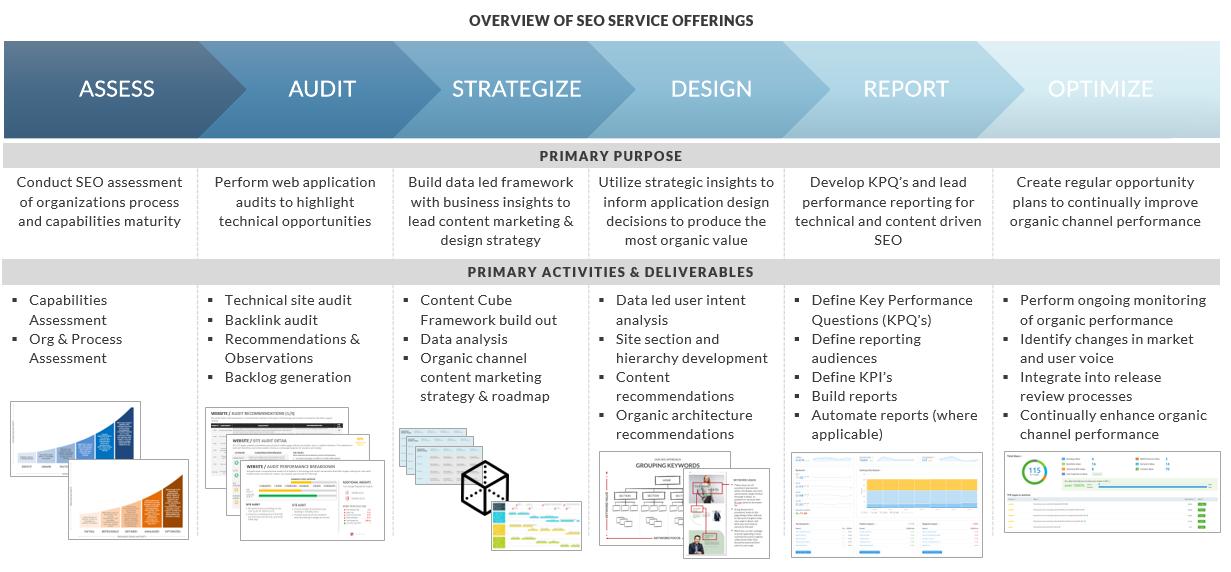
SEO Capabilities for Enhanced Visibility
When selecting the right ecommerce platform, one of the most critical aspects to consider is its SEO capabilities. A robust SEO strategy can significantly enhance your online store’s visibility, making it easier for potential customers to find you through search engines. Here’s what to look for:
- Customizable URLs: Ensure the platform allows you to create clean, keyword-rich URLs. This not only helps with SEO but also makes your links more user-friendly.
- Meta Tags Control: Look for platforms that enable you to customize title tags and meta descriptions for each product and page, enhancing click-through rates in search results.
- Mobile Optimization: With the growing trend of mobile commerce, it’s crucial that your ecommerce platform automatically optimizes your website for mobile devices, as Google prioritizes mobile-friendly sites.
- Site Speed: A fast-loading website is essential for user experience and SEO. Make sure the platform you choose can handle large images and heavy traffic without compromising speed.
Moreover, having built-in SEO tools can save you time and effort. Many modern ecommerce platforms come equipped with features like:
- SEO Audits: Some platforms provide tools that analyze your site’s SEO performance and give actionable insights to improve it.
- Sitemap Generation: Automatic sitemap generation helps search engines discover and index your products and pages effectively.
- Image Optimization: Platforms that allow for alt text customization and image compression can enhance your SEO, particularly for image search.
Additionally, consider the platform’s blogging capabilities. A well-integrated blog can significantly boost your SEO efforts. It allows you to create valuable content that attracts visitors and encourages backlinks from other sites, further improving your visibility.
| Feature | Importance for SEO |
|---|---|
| Customizable URLs | Enhances search ranking and user experience |
| Meta Tags Control | Increases click-through rates |
| Mobile Optimization | Vital for search engine ranking |
| Site Speed | Improves user retention and SEO ranking |
| Sitemap Generation | Facilitates better indexing |
Lastly, integrating social media is a powerful way to boost your SEO. Choose a platform that facilitates easy sharing of your products and blog content across various social channels. This not only drives traffic but also signals to search engines that your content is trustworthy and engaging.
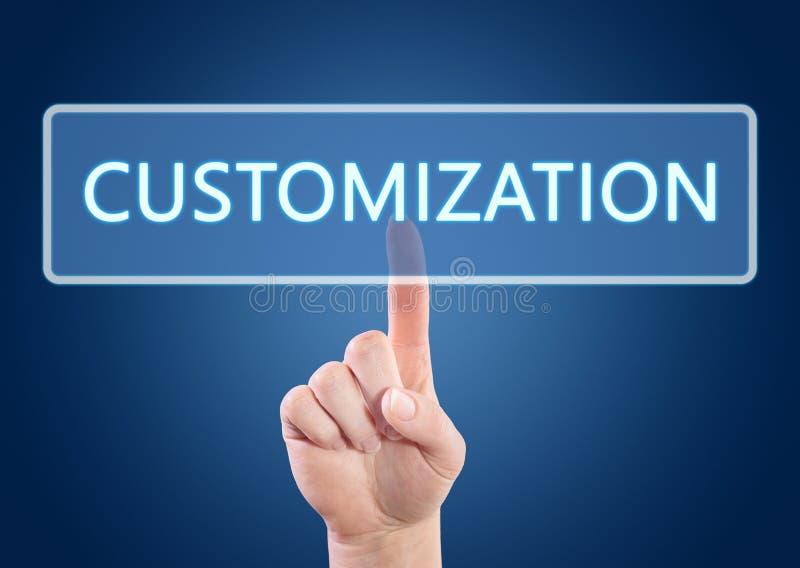
Customization: Making Your Store Truly Yours
When selecting an ecommerce platform, one of the most vital considerations is customization. Your store should not only reflect your brand’s identity but also cater specifically to your target audience’s needs. The right platform allows you to tailor not just the look of your site, but also its functionality.
Before diving into customization options, think about your brand’s personality. Is it modern and sleek, or do you prefer a more rustic, homey feel? Whatever your style, ensure that your ecommerce platform supports a wide range of customizable themes and templates. Here are some features you should look for:
- Flexible Design Options: Opt for a platform that provides drag-and-drop functionality, making it easy to position elements exactly where you want them.
- Custom CSS: If you have coding skills, the ability to edit CSS allows for deeper customization of your site’s appearance.
- Responsive Themes: Ensure that the themes you choose look great on both desktop and mobile devices for a seamless shopping experience.
- Branding Tools: Look for platforms that offer easy ways to integrate your logo, color scheme, and typography throughout your site.
Next, think about the functionality your store needs. Different businesses have different requirements – some might need advanced inventory management, while others may need specific payment gateways. Here’s a quick comparison of popular ecommerce platforms and their customization capabilities:
| Platform | Design Flexibility | Custom Functionality | Ease of Use |
|---|---|---|---|
| Shopify | High | Medium | Very Easy |
| WooCommerce | Very High | High | Moderate |
| BigCommerce | Medium | High | Easy |
| Squarespace | High | Low | Very Easy |
Don’t forget about customer engagement features. Personalizing your store can significantly enhance the shopping experience, leading to higher conversion rates. Consider incorporating:
- Customer Reviews: Showcasing customer feedback can foster trust and encourage purchases.
- Personalized Recommendations: Use tools that suggest products based on user behavior to enhance user experience.
- Live Chat Support: Offering real-time assistance can help address customer inquiries instantly, boosting satisfaction.
Ultimately, the goal of customization is to create a unique shopping experience that resonates with your audience. As you evaluate different ecommerce platforms, focus on those that empower you to bring your vision to life. The right combination of design, functionality, and brand alignment will set your store apart from the competition and help you forge a deeper connection with your customers.

Reading Reviews: Learning from Other Users’ Experiences
When you’re on the hunt for the ideal eCommerce platform, reading reviews from real users can be your best ally. These firsthand accounts not only illuminate the pros and cons of various platforms but also offer insights into features you might not have considered. They help you gauge whether a platform will genuinely meet your unique business needs.
Understanding User Experiences
Diving into user reviews allows you to see the platform through the eyes of those who have already navigated its waters. Pay attention to:
- User Interface: Is it intuitive and easy to use?
- Customer Support: How responsive and helpful is the support team?
- Customization Options: Are users satisfied with the ability to personalize their stores?
- Integrations: What external tools and services do users successfully connect with the platform?
The Power of Specific Examples
Many reviews provide specific examples that can guide your decision-making process. For instance, a user might share how they overcame a particular challenge using a platform’s features. This can give you practical insights into the platform’s capabilities and limitations, helping you visualize how it would work for your own business.
Comparing Platforms
To make an informed choice, create a comparison table based on user reviews. Here’s a simple example:
| Platform | Ease of Use | Customer Support | Customization | Overall User Rating |
|---|---|---|---|---|
| Shopify | Very Easy | Excellent | High | 4.8/5 |
| WooCommerce | Moderate | Good | Very High | 4.5/5 |
| BigCommerce | Easy | Very Good | Moderate | 4.6/5 |
Spotting Red Flags
While it’s essential to look for positive feedback, be on the lookout for recurring negative comments. If multiple users mention issues like poor customer support or frequent downtime, take these warnings seriously. They could indicate potential problems that may affect your business down the line.
Engaging in Community Discussions
Another valuable resource is community forums and social media groups. Engaging in discussions can provide you with real-time feedback and additional perspectives that might not be included in formal reviews. Don’t hesitate to ask questions about specific functionalities or integrations you’re interested in.
Ultimately, leveraging user reviews is more than just gathering opinions; it’s about piecing together a comprehensive view of how a platform operates in the real world. By doing so, you can make a confident and informed decision that aligns with your business goals.

Making the Final Decision: Trust Your Instincts
When it comes to selecting an ecommerce platform, the myriad of options can feel overwhelming. You’ve done your research, compared features, and weighed the pros and cons, but now it’s time to take a step back and listen to that inner voice. Your instincts can guide you towards the choice that resonates most with your vision and goals.
Consider the following factors that can help align your instincts with practicality:
- User Experience: Reflect on how intuitive the platform feels to you. Does it make sense? Can you see yourself navigating through it effortlessly?
- Scalability: Think about your future. Does this option allow for growth? Trust your gut about whether it can handle your ambitions.
- Support and Community: A strong support system can make all the difference. Do you feel confident in the resources available? Sometimes, a well-connected community can be a game-changer.
Sometimes, the numbers don’t tell the whole story. While analytics and reviews are important, they should not solely dictate your decision. Instead, ask yourself:
- How does this platform make me feel?
- Am I excited about using this tool?
- Does it inspire confidence in me as a business owner?
To further clarify your decision, you might want to draft a simple pros and cons table. This can help visualize your thoughts and feelings about each platform:
| Platform | Pros | Cons |
|---|---|---|
| Platform A | Easy to use, good support, customizable | Higher cost, limited payment options |
| Platform B | Affordable, lots of plugins, scalable | Steeper learning curve, less support |
| Platform C | All-in-one solution, strong analytics | Not very customizable, can be complex |
After you’ve weighed the options, take a moment to reflect. Sometimes, stepping away from the decision for a few hours or even a day can help clarify your thoughts. When you return, how do you feel about each option? This can be a critical moment to trust your instincts fully.
Ultimately, choosing the right ecommerce platform is a personal journey. It’s not just about features or price; it’s about finding a platform that aligns with your vision and makes you feel empowered. Don’t hesitate to follow your intuition—after all, it’s your business, and you know it best!
Frequently Asked Questions (FAQ)
Q&A: How to Choose the Best Ecommerce Platform for You
Q: Why is choosing the right ecommerce platform so important?
A: Great question! Your ecommerce platform is the backbone of your online business. It affects everything from how easy it is to manage your store to the overall shopping experience for your customers. A well-chosen platform can boost sales and improve customer satisfaction, while a poor fit can lead to frustration and lost revenue.
Q: What are the key factors I should consider when selecting an ecommerce platform?
A: There are several important factors to keep in mind:
- Ease of Use: Look for a user-friendly interface. You want something that allows you to set up and manage your store without needing a degree in tech.
- Scalability: Choose a platform that can grow with your business. If you plan to expand, make sure your platform can handle increased traffic and sales.
- Customization Options: You’ll want a platform that allows you to tailor your store to your brand. Check their themes and design flexibility.
- Payment Options: Ensure the platform supports a variety of payment methods to cater to different customer preferences.
- SEO Features: A good ecommerce platform should help you optimize your site for search engines so you can attract more visitors.
- Support and Resources: Look for platforms with reliable customer support and a wealth of resources, like tutorials and forums.
Q: Do I need to be tech-savvy to use an ecommerce platform?
A: Not at all! Many platforms are designed with beginners in mind, offering drag-and-drop features and templates that make it easy to get started. However, having a basic understanding of web technologies is always a plus. If you ever hit a snag, though, quality customer support can help you get back on track.
Q: What are some popular ecommerce platforms I should consider?
A: There are several great options out there, depending on your needs:
- Shopify: Known for its ease of use and extensive app ecosystem. Perfect for beginners and growing businesses.
- WooCommerce: A flexible option for WordPress users, offering endless customization possibilities.
- BigCommerce: Ideal for larger businesses with advanced features and scalability.
- Wix eCommerce: Great for beginners, especially if you want a visually appealing site without too much hassle.
- Squarespace: Perfect for creatives, offering stunning design options and ease of use.
Q: How can I determine which platform fits my budget?
A: First, consider your initial setup costs, monthly fees, transaction fees, and any additional costs for apps or themes. Create a budget that reflects your business size and future growth plans. Always read the fine print to uncover any hidden fees!
Q: Can I switch platforms later if I find the one I choose isn’t working for me?
A: Yes, but switching can be a bit of a hassle. Migrating your store and customer data takes time and effort. That’s why it’s crucial to do thorough research upfront and select a platform that will meet your long-term needs.
Q: Any final tips for making the right choice?
A: Absolutely! Take advantage of free trials offered by many platforms. This way, you can test out features and get a feel for the interface before committing. Also, read reviews and ask for recommendations from other business owners. The ecommerce community is incredibly helpful!
Choosing the right ecommerce platform is a game-changer for your business. Invest the time to find the best fit for you, and you’ll reap the rewards down the line!
In Retrospect
choosing the right eCommerce platform is like picking the perfect partner for your online business journey—it should align with your goals, values, and vision. By considering factors like ease of use, scalability, payment options, and customer support, you can ensure that your platform not only meets your current needs but also grows with you as your business evolves.
Remember, this is not just a decision for today; it’s an investment in your future success. Take the time to explore your options, read reviews, and even try out some demos. The right platform can make all the difference, giving you the tools to not just survive, but thrive in the bustling world of eCommerce.
So, what are you waiting for? Dive in, do your research, and find the platform that feels like your perfect match. Your online store deserves it, and so do you! Happy selling!



